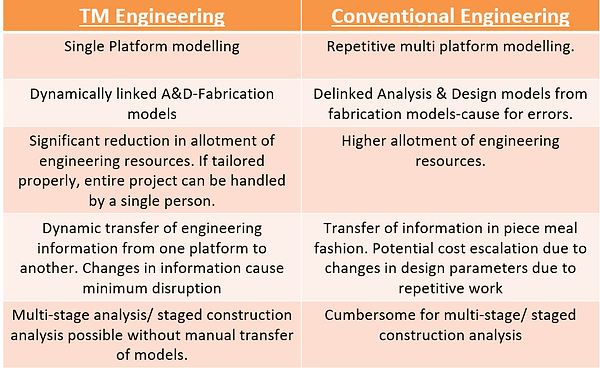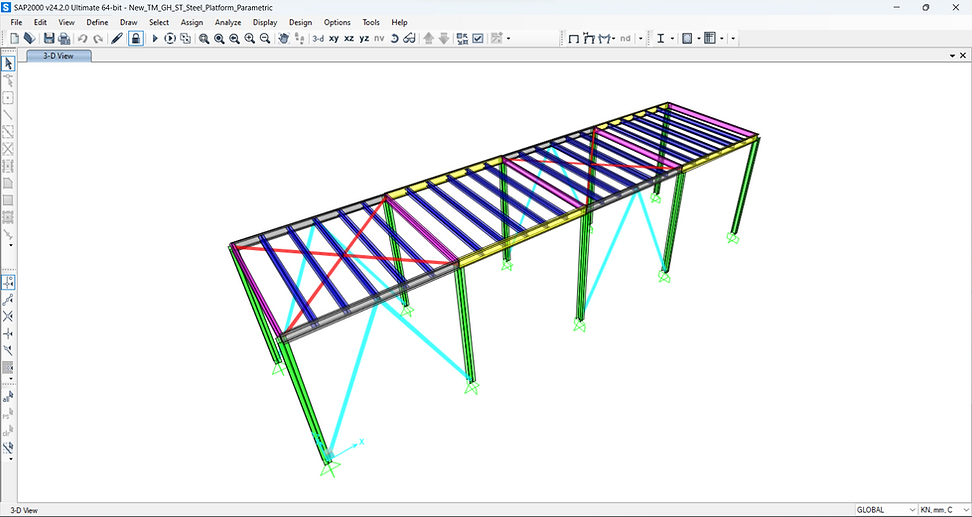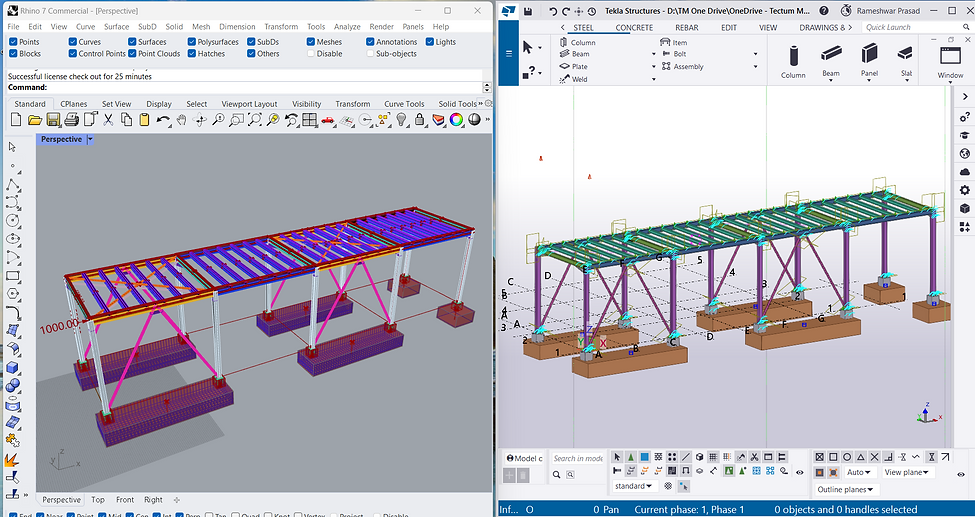
Why we do, what we do?
Before we get into the How's of our business, we would like to talk about the Why's and how it might help in bringing down the design time and cost. A comparison of the TM way of doing things vs the conventional way of designing structures is provided below.

How we engineer stuff?
Centralised Modelling
We use Rhino & Grasshopper in tandem (as a central modelling platform) to create structural models. These models can be either parametric/hybrid or manually modelled in the Rhino environment. Using the grasshopper add-in helps us in parameterizing the model if required. Third party grasshopper plugins are then used to create analysis and design (A & D) and fabrication steel model and/or concrete model. This creates a live link between Rhino and other software without having the need to manually transfer the structural information.
Any change in the Rhino model dynamically updates the A&D as well as the fabrication model. This saves time and resources and also reduces errors in data transfer.
We use SAP2000 for analysis and design of steel and concrete stick models, perform dynamic analysis and lifting and transportation analysis. STRAND 7 is used for shell (plate) models whose reinforcement need to be computed and models that require solids (e.g. block machine foundation). Tekla Structures is used to create the steel fabrication or pre-case/in-situ concrete models.
Some models created using the above mentioned work flow are presented below.
Parametric Steel Platform
Rhino Model

Grasshopper script of steel platform
This platform is a parametric model with variables like its height, width, no. of bays, secondary beam spacing parameterized. This model is then exported to SAP2000 via plugins where it is analysed, designed and the results exported back to Grasshopper. These analysis and design results could be used to carry out the optimization process if required.

SAP2000 Model

SAP2000 Model showing Utility Ratio

Tekla model (linked to Rhino Model)
The dedicated tekla grasshopper plugin is used to populate connections, foundations and members. The completed model can then be imported back into Rhino to visualize if required.
Optimization
Grasshopper components like Galapagos can be used to run optimization algorthims. This helps in selecting appropraite section sizes for structural elements that have been optimized for variables like minimum weight/ minimum displacement etc.
The above optimization was carried out for column sizes against deflections for wind load case in the X direction. Serviceability/Strength load combinations can also be used for such exercises.
Openings in pre-cast panel
Using a custom developed plugin, we have made it really easy to create openings in pre-cast panels. Engineering properties like area, centroid of the panel are available at the click of a button.
Lifting analysis for panels
Lifting analysis of pre-cast panels can be easily performed to get an idea of deflections and stresses on each face. The parametric nature of scripting helps us to understand the panel behaviour for varied options of lifting points and panel angle.
Mesh optimization
Mesh optimization can be carried out with ease using Gh and other third party meshing tools for convergence analysis. Such kind of analysis helps us to determine the optimum mesh sizes required to get decent FEA results.
Foundation design using SAFE
We use SAFE for performing foundation design. SAP models (Reactions) can be easily exported to SAFE, where one can compute analysis results like soil-pressure, moments etc. Design strip moments then help us in performing reinforcement design according AS3600.
STAGE CONSTRUCTION USING SAP200
Staged construction essentially involves analysing and checking the stability of the structure based on the erection order of the elements. Using this type of analysis, the engineer can ensure if the partially built structure is actually stable or if some temporary propping is required.
